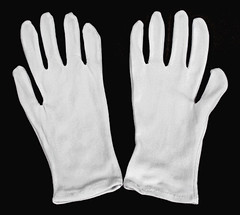
PREV ARTICLE
NEXT ARTICLE
FULL ISSUE
PREV FULL ISSUE
MORE ON SAFELY STORING BOOKSReaders are chiming in with more thoughts and information on book storage (coin books or otherwise). First, Gil Parsons of Parsons Books. -Editor The latest issue contained passing reference to using Ziploc® bags for book storage. My response is:”PLEASE DO NOT DO THIS!” Ziploc® bags are better than some, but are far from archival quality. The issue is the chemical composition of the bag: polypropylene is best (and itself has several grades); polyethylene is a significant grade below; polyvinyl chloride (PVC) is worst of all. Ziploc® bags differ materially from bags designed for preservation purposes. I encourage readers to check out offerings by such as Gaylord Archival, Light Impressions, University Products, or other firms expressly dedicated to preservation. My first recommendation would be to wrap a worthy book in archival tissue, and then to place it in an appropriately sized archival cardboard box. But, if visibility be desired and plastic be deemed a desirable option, the (not excessive) investment in archival bags (which often can be had with sliding closures) is more than worthwhile. A brief word about books in general: Approximately 1850 is the date of a “perfect storm” of book degradation: paper was made increasingly from wood pulp rather than from linen rags; ink became far more acidic as traditional materials (carbon black, oak gall, etc) were replaced by chemical compounds; many other adjustments were made to accommodate faster, powered, presses. Thus, these modern books degrade significantly faster than those of previous generations, which are often found as fresh as the day they left the press. Older books are relatively inert, subject only to excessive moisture or too much direct light. Books of the late nineteenth (or even worse, twentieth century) will degrade regardless of what enclosure be used to surround them. And, as collectors have discovered to their chagrin in the context of recent Giclee prints or books produced by offset lithography, the degrading can occur even in total darkness and unencumbered air flow. Ziploc® bags provide yet another opportunity for chemical interaction—Since they were only invented in the late 60s, I do not think there is adequate information of how they interact with various sorts of books and paper. One thing is certain: they are terrible for storage of photographic media. The production of “archival”products is more complex, and plastic “outgassing” is buffered or eliminated.
The discussion was triggered by Scott Semans' concern about dampness in his wet Seattle-area environment. He's storing a modern book inventory, not rare antiquarian works. But Gil's advice is right on target. We hadn't discussed this topic in a while and it's always worth revisiting. Next is Bob Van Arsdell, who included links to two articles on book storage. -Editor One mentions placing books in UNSEALED polyethylene bags - which may be controversial.
As always, someone will have an opinion on the internet. Frankly, I’m skeptical you’ll find a single source on the web that represents all the current thinking about book conservation. For years, I believed that a good way to repair Victorian Era high-acid wood-pulp paper was to bleach it white and deacidify it. Then I met a young paper conservator who restored the worst paper imaginable to pristine flexibility, yet left the yellowing of age intact. It was an amazing experience to hold a Victorian cookbook with yellowed paper that should be crumbling to pieces and yet the paper was as flexible as the day it left the mill. Everything we think we know about book conservation is being challenged by modern techniques. I was involved in developing an electro-optical instrument for measuring the thickness of plastic packaging materials 35 years ago. Ziplock-type bags are actually made up of 5 to 7 layers of different plastics. Two might be polyethylene to act as a moisture barrier. The innermost layer might be nylon, acting as an oxygen barrier. The other layers would be a kind of glue to bond the nylon to the polyethylene (they don’t stick together naturally). As you can see, this gets complicated pretty quickly. Putting a book in a locking bag assumes you want to keep “bad” chemicals from entering or leaving the book. Remember, your dealing with chemical byproducts from deterioration of wood or rag paper building up inside a book. Maybe you really want those byproducts to dissipate. I’d suggest the question raised here isn’t one for speculation or people with short-term experience (less than hundreds of years). Its a job for an experienced, professional paper conservator working at an institution that has stored books for a half-millennium. Perhaps someone at the British Library or the Bodleian at Oxford could give some guidance.

To read the complete articles, see:
Thanks, everyone. It's great to hear that new techniques are emerging. I would also recommend listening to this month's NBS podcast interview with Joel Orosz, who provides tips on proper book storage. -Editor
To listen to the podcast on the NBS home page, see:
To read the earlier E-Sylum articles, see:

Wayne Homren, Editor The Numismatic Bibliomania Society is a non-profit organization promoting numismatic literature. See our web site at coinbooks.org. To submit items for publication in The E-Sylum, write to the Editor at this address: whomren@gmail.com To subscribe go to: https://my.binhost.com/lists/listinfo/esylum All Rights Reserved. NBS Home Page Contact the NBS webmaster 
|
